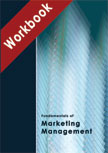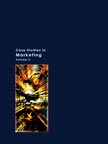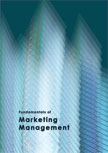Hershey: Going through a Sweet Recession
|
|
ICMR HOME | Case Studies Collection
Case Details:
Case Code : MKTG222
Case Length : 17 Pages
Period : 2000-2009
Pub Date : 2009
Teaching Note :Not Available
Organization : The Hershey Company
Industry : Chocolate and Confectionary
Countries : US, Global
To download Hershey: Going through a Sweet Recession case study
(Case Code: MKTG222) click on the button below, and select the case from the list of available cases:


Price:
For delivery in electronic format: Rs. 300;
For delivery through courier (within India): Rs. 300 + Shipping & Handling Charges extra
» Marketing Case Studies
» Marketing Management Short Case Studies
» View Detailed Pricing Info
» How To Order This Case
» Business Case Studies
» Case Studies by Area
» Case Studies by Industry
» Case Studies by Company
Please note:
This case study was compiled from published sources, and is intended to be used as a basis for class discussion. It is not intended to illustrate either effective or ineffective handling of a management situation. Nor is it a primary information source.
Chat with us

Please leave your feedback

|
|




<< Previous
Introduction Contd...
|
It has several iconic brands like Hershey's Milk Chocolate
Bar, Reese's Peanut Butter Cup, and Hershey's Kisses in its portfolio. From the
beginning, the company had followed a strategy of growing the business through
product line extensions and special edition products4.
During the period 2000-2005, Hershey experienced flat sales. The company
realized that in order to grow its business, it needed to introduce new products
and enter new market segments.
Accordingly, it entered the snacks and the
premium dark chocolate market segments, with several new products.
|

|
Targeting the health-conscious segment of the market, the
company also developed a portfolio of products, which, it said, used a range of
items with proven health benefits.
However, in spite of the new products, sales remained flat. In February 2007,
the then President and CEO of the company, Richard H. Lenny (Lenny), initiated a
three-year restructuring exercise to streamline production, develop a flexible
supply chain, and generate savings to invest in growth initiatives like
international expansion and new product innovation.5 The restructuring which was
to cost US$ 550-575 million, was expected to result in annual savings of US$
170-190 million for the company by 2010...
Excerpts
>>
|
|










